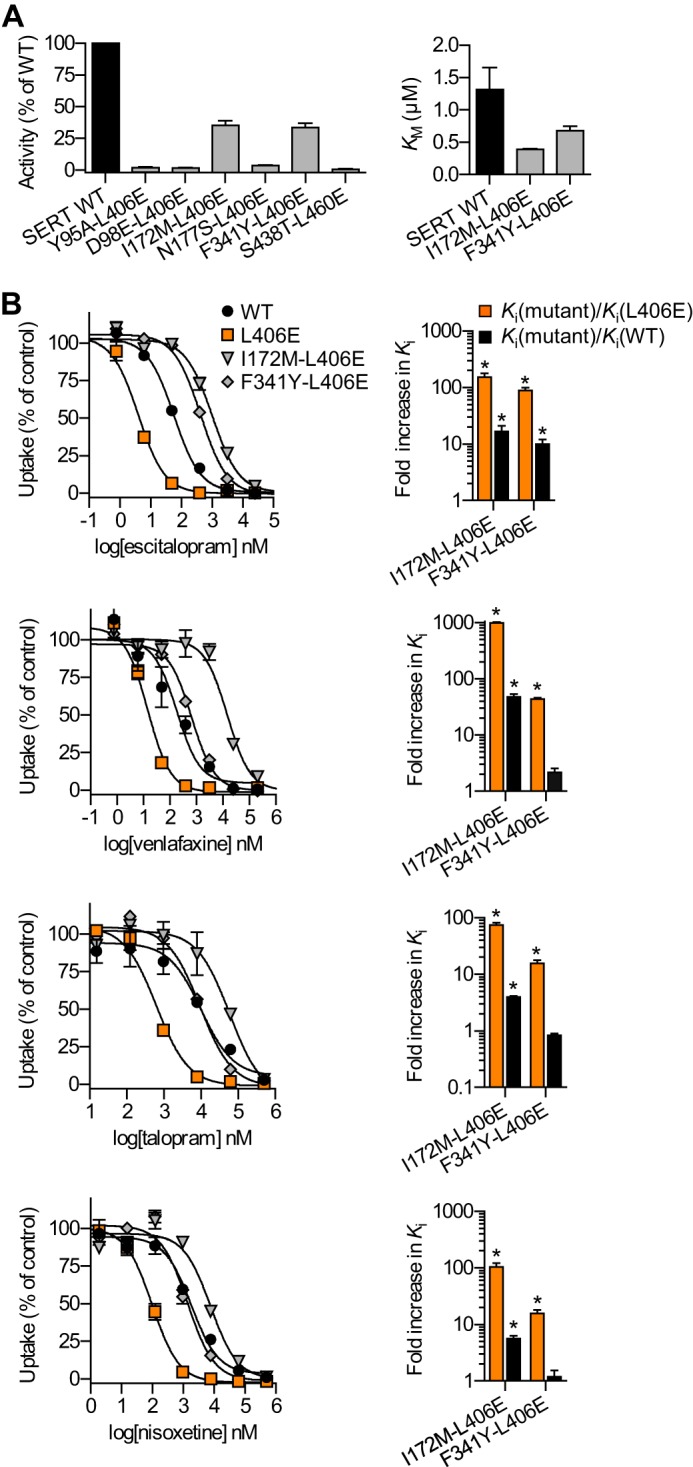FIGURE 4.

Introducing S1 mutations in the background of L406E significantly reduce inhibitor potency. A, six different S1 mutations were introduced into the background of L406E, and the mutants were assessed for functional activity by measuring uptake of 50 nm [3H]5-HT in COS7 cells expressing the double mutants. The substrate Km value was determined for the two functionally active mutants (I172M/L406E and F341Y/L406E). B, dose-response curves from representative [3H]5-HT uptake inhibition experiments in COS7 cells expressing SERT WT or the indicated mutants (left). Data points represent mean ± S.E. from triplicate determinations of accumulated radioactivity in cells incubated with 50 nm [3H]5-HT in the presence of increasing concentrations of escitalopram, venlafaxine, talopram, or nisoxetine. Uptake has been normalized to percent uptake of cells incubated in the absence of inhibitor. For I172M/L406E and F341Y/L406E, the mutational induced increase in inhibitor Ki was calculated as Ki(mutant)/Ki(WT) (black bars) or Ki(mutant)/Ki(L406E) (orange bars) from paired experiments (right). Data represent mean ± S.E. from 3 to 5 independent experiments each performed in triplicate. Asterisks denote that I172M/L406E or F341Y/L406E induce a significant increase in inhibitor Ki compared with WT (black bars) or L406E (orange bars).
